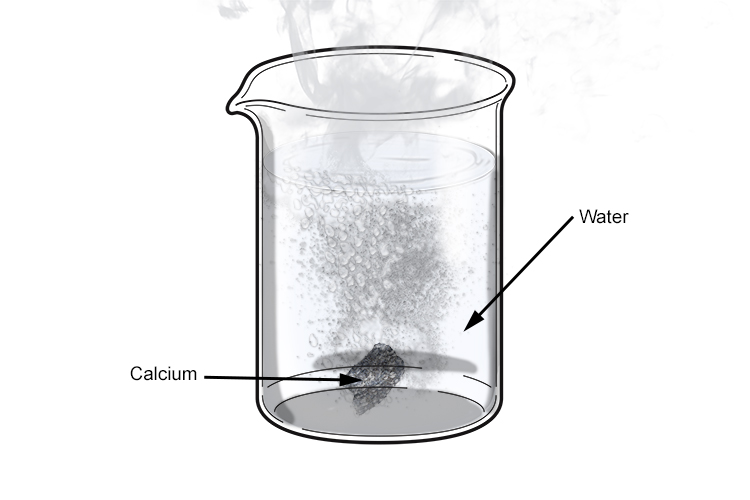The reaction between calcium and water
When calcium reacts with water the product is calcium hydroxide and hydrogen gas. The calcium hydroxide that is produced is an alkali.
| Calcium | + | Water | → | Calcium hydroxide | + | Hydrogen |
| Ca | + | 2H20 | → | Ca(OH)2 | + | H2 |

Unlike the group 1 metals mentioned earlier, calcium is denser than water so it sinks.
The reaction between calcium and water in more detail
Note: You will not need to know this information but it may help to provide you with a better understanding of what takes place during this reaction.

As calcium is a group 2 metal, it has two electrons in its outer shell. This means that unlike the group 1 metals, each atom of calcium (Ca) loses two electrons to the water molecules (H2O), creating a 2+ positively charged calcium cation (Ca2+). This ion forms two ionic bonds, one to each of the oxygen ions (O-) which are now negatively charged having each acquired an extra electron from the calcium. While each oxygen ion (O-) maintains one covalent bond to the hydrogen atom (H), the remaining two hydrogen atoms leave the oxygen and form a covalent bond together to make a diatomic molecule of hydrogen gas (H2).
This means that the calcium hydroxide molecule has two ionic bonds between the calcium and oxygen ions and there are covalent bonds between each of the hydrogen atoms and oxygen ions.




